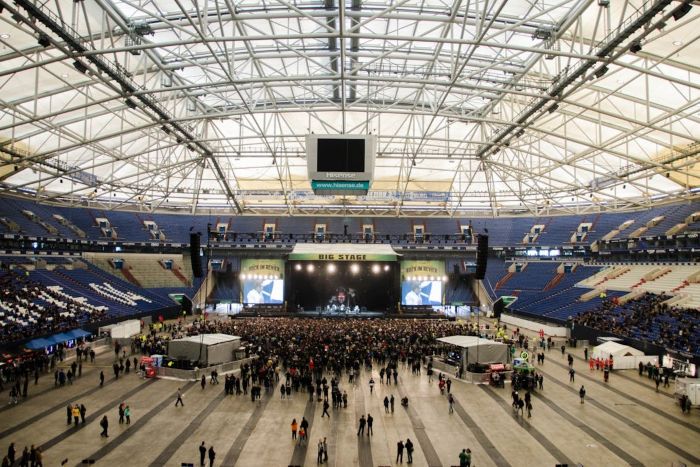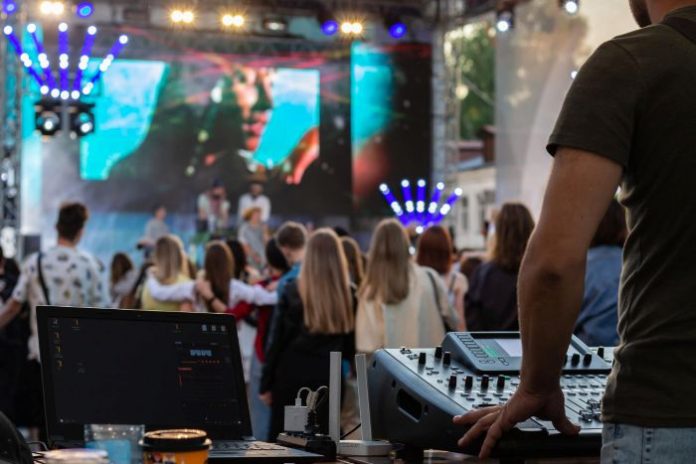The AV industry has always been a space where creativity and technology intersect, but in 2025, that intersection is accelerating faster than ever. From real-time rendering on massive LED walls to AI-driven control systems, today’s AV trends with event experiences are pushing the boundaries of what’s possible.
For planners, producers, and technical directors, staying ahead of these shifts isn’t just about chasing innovation. It’s about understanding which trends are mature enough to adopt and how they fit into your production strategy.
Let’s explore six key AV trends reshaping conferences and live events this year, along with a few questions to ask your vendors as you navigate these changes.
Key Takeaways
- In 2025, AV trends showcase immersive LED volumes and real-time rendering, enhancing event experiences significantly.
- Spatial audio and beamforming improve audio clarity for audiences, creating personalized listening zones and immersive effects.
- AV over IP workflows are simplifying installations and enabling remote monitoring, crucial for scalability in events.
- Private 5G networks offer dedicated high-speed connections for hybrid events, supporting minimal latency and reliable uplink.
- Sustainability becomes paramount, with vendors adopting energy-efficient solutions and carbon reporting to meet corporate client demands.
Table of contents
1. LED Volumes Meet Real-Time Engines
The days of flat screens and static backdrops are giving way to immersive LED volumes, like 360-degree displays powered by real-time engines like Unreal and Disguise. These setups blur the line between physical and digital environments, allowing events to transform instantly from a keynote stage to a virtual skyline.
Real-time rendering makes scenic changes more dynamic while slashing the need for traditional scenic builds. Expect to see:
- Hybrid Storytelling: Blending filmed, live, and interactive elements.
- Virtual Sets: Providing cinematic backdrops for on-site speakers.
- Smarter Scaling: enabling flexible stage design for different room sizes.
While LED volumes have been standard in film and broadcast, 2025 marks AV trends’ mainstream arrival in the corporate and conference world. Costs are dropping, and many production houses are building in-house Unreal capabilities.

2. Spatial Audio and Beamforming
Audio has long been the unsung hero of live events, but spatial sound is bringing it front and center. Beamforming and object-based mixing systems can now direct sound precisely where it’s needed, creating consistent audio coverage across large rooms while minimizing spill and echo.
For event producers, this means audiences in every seat hear the same clarity, without overwhelming the space. Expect applications like:
- Personalized listening zones for multi-language conferences
- Immersive audio layers tied to visual effects
- Reduced hardware footprints due to smarter DSP and speaker arrays
This technology also integrates neatly into AV-over-IP networks, paving the way for more adaptable event soundscapes.
When exploring implementations, look for vendors who understand both acoustics and digital audio networking. In major convention markets, where large-scale adoption often starts, teams already have hands-on experience with these systems.
For instance, many large venues leverage event AV production in Las Vegas, Nevada to manage complex setups that balance immersive sound and scalability.
3. AV over IP Workflows
As Ethernet-based systems replace traditional point-to-point cabling, AV over IP (AVoIP) is unlocking unprecedented flexibility. These networks transmit video, audio, and control signals across standard infrastructure, simplifying installations and enabling remote monitoring.
Why it matters in 2025:
- Simpler Scaling: Easily add rooms or overflow spaces.
- Fewer Bottlenecks: Less hardware dependency and faster troubleshooting.
- Enhanced Collaboration: remote operators can cue content or adjust levels from anywhere.
Expect most new installations to favor AVoIP-ready devices by the end of 2025. If you’re upgrading, ask integrators about latency specs, bandwidth needs, and encryption standards, especially when connecting across multiple venues or hybrid environments.
4. Private 5G for High-Bandwidth Uplink
With hybrid events here to stay, reliable uplink bandwidth is mission-critical. Enter private 5G networks, giving event organizers dedicated, high-speed wireless connectivity without relying on congested public networks.
In 2025, large convention centers and outdoor festivals are deploying micro 5G nodes to support streaming, intercom, and control data with minimal latency. This technology is still emerging, but expect broader adoption within two years, especially for events with broadcast components or multiple simultaneous feeds.
5. AI-Assisted Mixing and Showcalling
Artificial intelligence isn’t replacing showcallers or engineers. It’s becoming their assistant.
New AI-enabled tools can analyze venue acoustics, predict cue timing, and suggest adjustments during rehearsals. In control rooms, AI can even generate automatic camera cuts or lighting cues based on speaker movement or audience reaction.
The payoff: more polished productions with fewer on-site surprises. For smaller teams, this means achieving high-end results without increasing crew size.
6. Greener Power and Sustainability Strategies
Sustainability continues to shape procurement decisions, and AV is no exception. Production companies are adopting energy-efficient LED fixtures, low-voltage power distribution, and battery-based systems that reduce generator use.
By 2025, many corporate clients are requiring carbon reporting for their events, pushing AV vendors to document and offset energy use. Look for:
- Hybrid power grids using renewables and stored power
- LED lighting arrays with intelligent dimming and cooling
- Reusable scenic and cabling systems to cut down waste
As sustainability standards evolve with future AV trends, transparent reporting will become as important as technical excellence. Vendors who can quantify their environmental footprint will have a clear edge in the marketplace.
The Bottom Line
The AV landscape in 2025 is defined by integration, where hardware, software, and human creativity converge to create seamless experiences. Whether you’re planning a small corporate summit or a major convention, these six AV trends can help you future-proof your production strategy.
From LED-powered storytelling to greener show control, the next generation of event AV isn’t just about bigger and brighter. It’s about smarter, more connected, and more sustainable experiences that engage audiences in entirely new ways.











